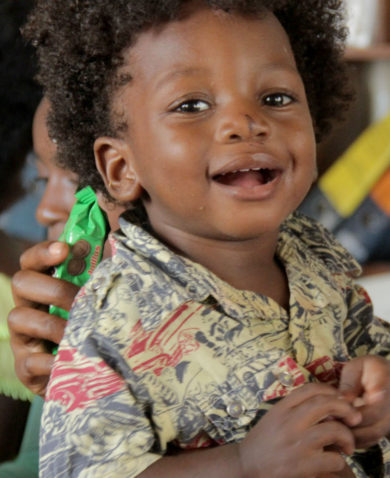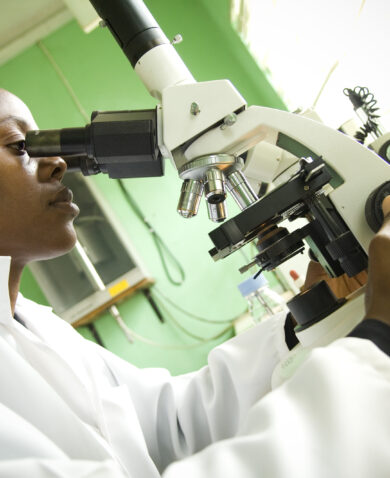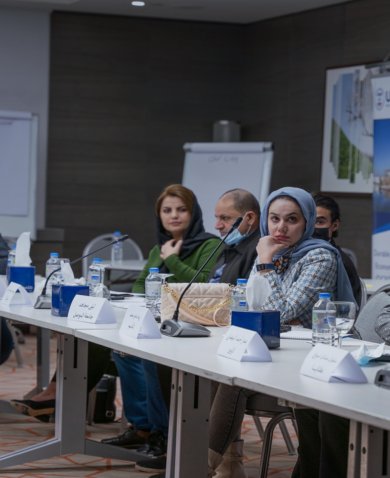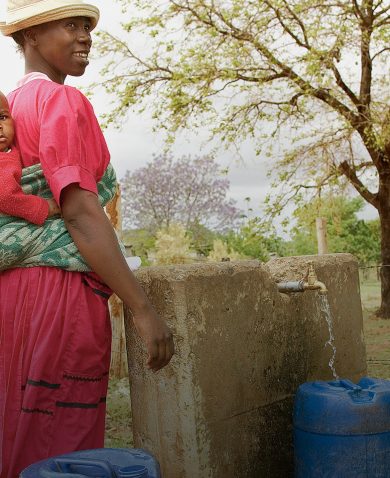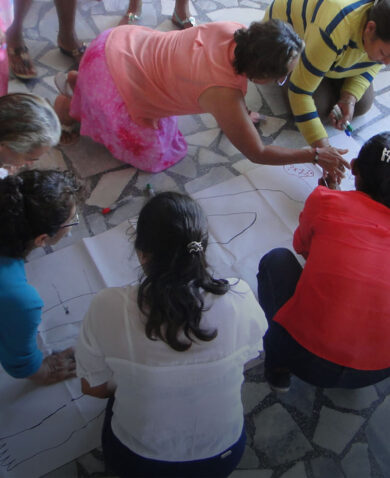
3 Misconceptions that Limit Progress for Refugee Communities
June 20, 2017 | 4 Minute ReadOn World Refugee Day, Sanida Kikic and Nicholas Sabato shine a light on several myths about refugees.
As the world witnesses the largest displacement of individuals in human history, we must advocate for these communities, especially on World Refugee Day. But while most of us sympathize with the plight of refugees, there are three common misconceptions about today’s refugee crisis that impact sustainable refugee empowerment. For those looking to support refugees in rebuilding their futures, it is critical to understand and address these misconceptions so that we can tailor our engagement to truly empower the individuals and communities we seek to support.
Misconception 1: The refugee crisis is primarily borne by developed countries
The reports that make it to our screens and newsfeeds mostly emphasize images of refugees arriving at the shores and borders of Germany, Italy, and other European countries. Meanwhile, a newly released UNHCR report shows that the weight of the refugee crisis is disproportionately shouldered by developing countries, with 84 percent of the world’s refugees located in developing regions. Digging deeper in the data, you will find that almost a quarter of the world’s refugees are in the world’s least developed countries. These countries are already challenged by structural and resource constraints, making it all but impossible for them to absorb large refugee influxes.
What can we do? As humanitarian aid continues to see funding shortfalls, including a record shortfall of 45 percent in 2015, development actors already working in impacted countries can become real assets in helping empower refugees. Most of these countries already receive development assistance, which should be augmented and tailored to help countries more effectively support refugees and to ensure that the country’s stability and development are safeguarded.
Misconception 2: Refugees spend limited time in forced displacement
The effects of this misconception are most visible in the creation of refugee camps that were constructed to be ephemeral in nature — often stood up in areas that are characterized by harsh environments, mostly made up of tents that can’t withstand severe weather conditions, and with limited or no opportunities for legal livelihood creation for their inhabitants. Meanwhile, some of these camps are entering their third decade of existence, and the data shows that four out of five refugee crises last more than ten years.
While camps can have an important role to play in an initial emergency situation, the humanitarian community, development practitioners, and local governments should collaborate on a more systematic and sustainable way to address the plight of refugee populations. While noble, it is not enough for only select countries to enact more open refugee policies since this tends to unfairly strain those countries’ resources, as it has in Uganda. If we are serious about addressing the refugee crisis, let us ask the global community to show more openness to refugees. They can do so by working with public and private actors in country and collaborating regionally and globally to provide speedy legal recognition, allowing refugees to engage in all aspects of society and the economy, and offering them an opportunity for planned integration, if desired.
Misconception 3: Refugee assistance should primarily focus on basic services
Almost two-thirds of humanitarian aid goes to what would be considered basic services, such as food, water, health, and shelter, among others. However, when refugee communities are asked to prioritize assistance needs, education consistently makes the top priority list, as reflected in more than a dozen different studies. Currently accounting for 1.4 percent of total humanitarian aid, education is often overlooked by donors, and data shows us the effects on refugee children and youth. According to the UNHCR, only 50 percent of refugee children and youth attend primary school. Just 22 percent are in secondary school, and 1 percent attain higher education — compared to world averages of 91, 84, and 34 percent, respectively. The vast disparity between resource allocation for refugee education and individuals’ overwhelming demand for educational opportunity presents tremendous opportunity for long-term impact. To close this gap, we need to focus on innovative, user-centered solutions that provide educational access for refugees. Promising developments are happening in the higher education space, where universities and other organizations are coming together around the concept of connected learning through the Connected Learning in Crisis Consortium to provide refugees with the chance to earn credentials that will lead to further educational or vocational opportunities. The success of these solutions will depend on providing refugees with pathways that are accessible, equitable, and relevant to the cultural environment.
Ultimately, there is no silver bullet to solve all the challenges refugees face daily — it would be naive to think that addressing one of these challenges will remedy everything. The issues noted above and many others are all intricately linked, and any lacking factor will impede progress within refugee communities, whatever their diverse circumstance — from living in camps in Kenya or in outskirts of towns in Lebanon, to resettling in Europe or the U.S., to seeking stability within their home country.
We must better harness the resources at our disposal, which look very different today than they did when the refugee assistance framework was originally established. This requires bringing together a myriad of actors to better collaborate in this space, such as multilateral agencies, governments, private sector, NGOs, refugees, diaspora, and academia, among others, and adopting a refugee-centric approach in line with human-centered design principles to take on a holistic redesign of the current framework. A new paradigm drawing on the values behind the Comprehensive Refugee Response Framework is essential to enable us to more effectively address the issues at hand so that we can truly empower the individuals and communities we are trying to support. It is a lofty aspiration, but a worthwhile one to advocate for on this World Refugee Day — and beyond.




